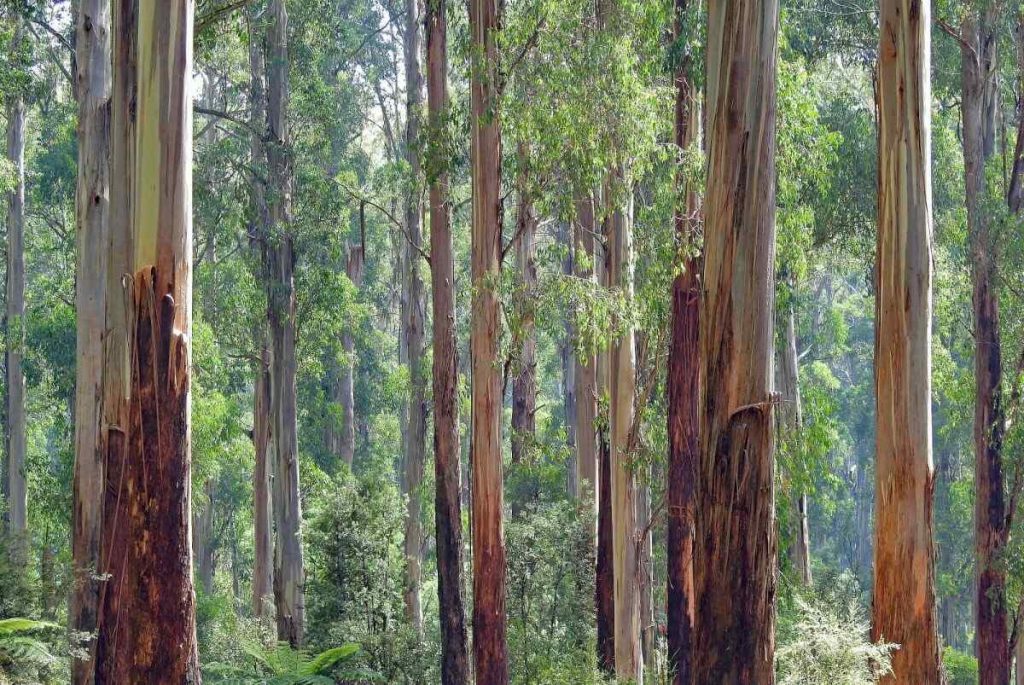Like many other fabrics, lyocell is made from a cellulose fiber.
It is produced by dissolving wood pulp with an NMMO (N-Methylmorpholine N-oxide) solvent, which is far less toxic than traditional sodium hydroxide solvents.
This dissolves the pulp into a clear liquid which, when forced through tiny holes called spinarettes, turns into long, thin fibers.
Then it just needs to be washed, dried, carded (aka separated), and cut! If that sounds confusing, think of it this way: lyocell is wood.
Most commonly, lyocell is made from eucalyptus trees. In some cases, bamboo, oak, and birch trees are also used.
This means that lyocell fabrics are naturally biodegradable!
HOW SUSTAINABLE IS LYOCELL?
This brings us to our next point: why is lyocell considered a sustainable fabric?
Well, for anyone who knows anything about eucalyptus trees, you’ll know that they grow quickly. They also don’t require a lot of irrigation, don’t need any pesticides, and can be grown on land that isn’t great at growing anything else.
In the case of TENCEL, the wood pulp is sourced from sustainably managed forests.
When it comes to the production process, extremely toxic chemicals and heavy metals aren’t required. Those that are, get reused in what’s referred to as a “closed-loop process” so they don’t get dumped into the environment.
Post time: Sep-22-2022

